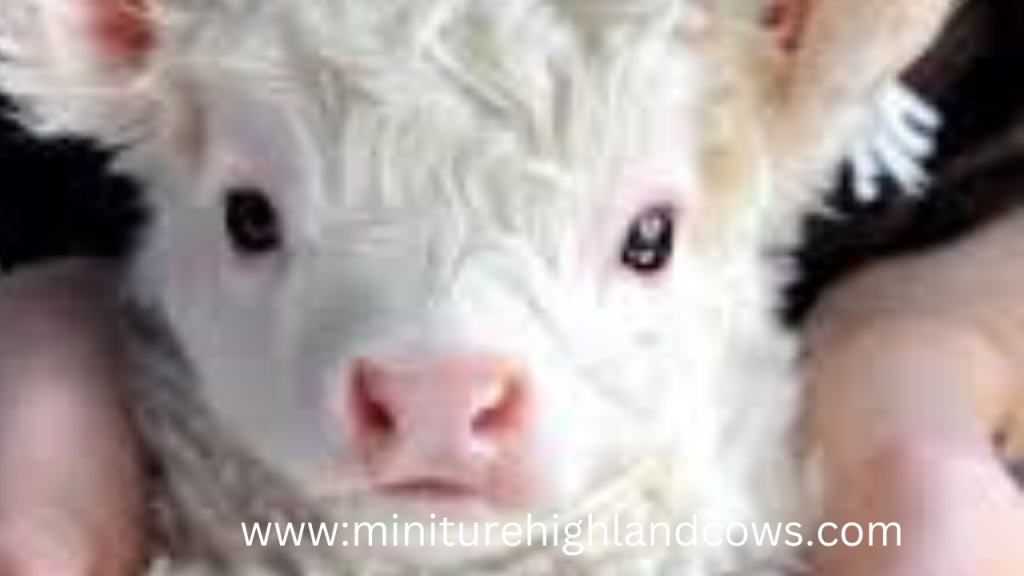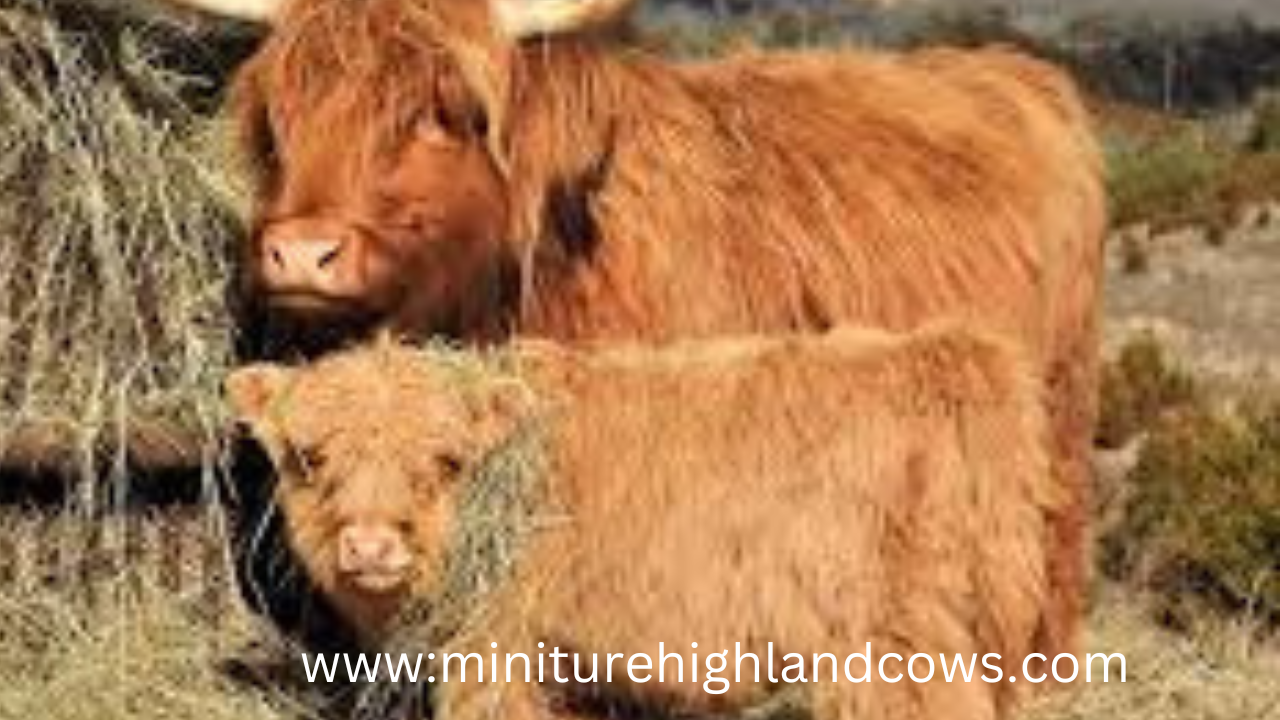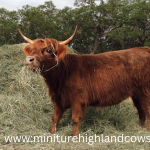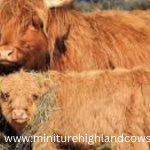Miniature Highland Cow Rescue : To Protect Love And Compassion
Highland cow originated from Scotland, and because of their long horns, and fluffy coats, have always been loved. As animals they are known for its tenacity and charm, miniatures Highland cows-just being miniatures-have become popular as a pets or for small-scale farms. But like all other animals, they get themselves into rescue situations due to negligence, abandonment, or unlivable conditions. It is rewarding yet challenging work rescuing these gentle souls: dedicated, knowledgeable, and having a compassionate heart. #### Learning About Miniature Highland Cows

About Miniature Highland Cattle
Miniature Highland cattle are smaller versions of the original Highland breed, characterized by long, shaggy coats and gentle personalities. They are more compact and easier to handle, ideal for smaller farms, hobbyists, or even someone looking for a unique and endearing pet. They retain all the characteristics that make the standard Highland breed so special but in a more accessible form.

Size and Appearance
Miniature Highland cattle are known to reach an average height at the shoulder of 36-42 inches when fully mature, in contrast to those full-size animals that usually attain heights of 48-54 inches. A new miniature Highland calf weighs, at birth, between 20-30 pounds, which is slightly smaller than an average birth weight of full-size calf, weighing, at birth, about 40-60 pounds. Despite their smaller size, they retain the classic Highland appearance: long, thick, wavy fur, often in shades of red, black, or white, and the iconic curved horns.
Their long, fluffy coats are one of their most recognizable features. These coats consist of two layers: a dense undercoat and a longer outer layer. The coat protects them from severe weather conditions. Their fur gives them an almost “teddy bear” look, making them irresistibly cute.
Temperament and Behavior
Miniature Highland cattle are known to be gentle, calm, and friendly. They are highly social animals and are often quite attached to their caregivers. This makes them an excellent companion animal for families and individuals. They are non-aggressive and gentle and, therefore, very easy to handle. They are also often used as therapy animals because of their calm presence. They are not aggressive and are very patient, which makes them ideal for people who want a more manageable livestock breed.
Their curiosities and brains make them fun to observe as they love exploring their environment and interacting with other animals. They are also pretty low maintenance compared to other breeds of cattle and therefore great for small scale farming or hobby farming.
Care and Maintenance
Although they are much smaller, miniature Highland cattle have the same needs as their full-sized Highland cows. They need space to run around, fresh pasture for grazing, and a warm, safe shelter to protect them from harsh weather. Grass and hay make up their diet, supplemented with various things to keep them in top health. Regular check-ups by veterinarians also keep them healthy.
One special aspect of managing miniature Highland cattle is coat maintenance. Their fur is always growing, so the animals do need to be groomed, especially when the warm weather sets in and can cause them to overheat if their coats are not managed.
Coats keep them warm through the cold winter months. They should be helped keep cool through the hot months.
Popularity and Uses
In recent times, miniature Highland cattle have also begun to become popular, although majorly for hobby farmers or small ranchers as pets. Some are also often kept because of the charm or kept in a petting zoo. They, on the other hand, fulfill purposeful purposes, for the meat of standard Highland is lean and tasty; these miniature Highland cattle have very much been kept solely and simply because they offer warmth and company to its gentle owners and bring it loads of happiness.
Their manageable size makes them suitable for those who want to experience the raising of cattle but are limited in space. They are also an excellent choice for those who are looking to add a unique and charming animal to their farm or property without the troubles that accompany larger cattle breeds.
Conclusion
Miniature Highland cattle are just as beautiful and charming as their full-sized counterparts, but in a more compact and manageable form. Friendly, calm, and simply stunning, they make any farm or home a happy place. Whether for companionship, novelty, or even small-scale farming, miniature Highland cattle are just a wonderful breed that still capture hearts with their innocence and sweetness.
Miniature Highland cow baby
Miniature Highland cow babies, or calves, are a lovely and unique version of the traditional Highland cattle breed. Famous for their striking, long, wavy coats, gentle nature, and curved horns, Highland cows have been a symbol of rugged beauty for many years. The miniature version of this breed retains all the classic qualities of the standard Highland breed, only in a smaller size, which makes them desirable to smaller farms, hobby farmers, and even folks wanting a little bit quirky to add to their yard or garden.

The breed, Highland, originates in Scotland, from the Highlands. It is one of the oldest, purest, and most recognizable breeds in the world. They are known for withstanding adverse weather conditions since they possess a dense, double-layered coat for warmth and protection. They vary in color, most commonly reddish-brown but there are black, white, and even silvers. Miniature Highland cows are bred through the process of selective cross-breeding from smaller-sized animals; sometimes, this breeding is intended to create a hardier but smaller-sized breed.
A Miniature Highland cow baby is very cute with a more manageable size compared to its full-sized cousins but still as adorable, appealing to many people. Normally, the calves weigh in between 20 and 30 pounds at birth; this is much lighter compared to a standard Highland calf, which weighs approximately 40 to 60 pounds at birth. As they mature, their size is smaller than in the typical Highland cow and usually stands at around 36 to 42 inches at the shoulder, with mature miniature cows, against the 48 to 54 inches of standard Highland cattle. Their size would make them ideal for use in smaller farms or even in backyard settings where there may be limited space available.
Although miniature Highland cows are smaller in size, they are as hardy as their larger counterparts. They are docile and calm in temperament, making them very suitable for families, petting zoos, and even therapy animal programs. Miniature Highland cows are friendly, curious, and easy to handle, which makes them all the more appealing as companion animals. It’s because of their sweet nature and endearing appearance that this kind of cow has gained greater popularity over the years. They have become increasingly well-known among non-commercial farmers who keep livestock.
Undoubtedly, one of the most characteristic features of the miniature Highland calf is their fluffy coat. Their coat is very long and looks shaggy, providing protection from the cold conditions of the Scottish Highlands from where they originated. As the calf grows, its coat becomes thicker and denser, at times even covering its eyes. This characteristic, together with their small stature and friendly disposition, makes these calves extremely cute and irresistible to animal lovers.
Their miniature Highland cow baby requires about the same type of care that any other calf needs. However, because of its smaller size, the need for this miniature Highland cow may slightly differ, mainly in terms of early management. Since they can get milk, they will often be ready to shift onto solid foods like grass and hay similar to regular Highland cows when they reach two months or so. They should be checked up regularly by a veterinarian for them to remain healthy, especially when they are young. Even though they are quite robust animals, they should not be exposed to harsh weather conditions and should be sheltered properly to feel comfortable.
Overall, miniature Highland cow babies offer the charm of the Highland breed in a size more manageable for people with limited space or who are searching for something different and loveable. Gentle nature, cute looks, and rugged constitution make them an ever-increasing choice for different owners. Whether as a charming addition to a farm or as a beloved pet, miniature Highland cows are sure to bring the delight and wonder that comes from encountering such unique animals.
The miniature Highland cow is hardy, low maintenance in care, suitable for the small farm or homestead. While this size presents an easier situation for caring for these animals, they carry many of the traits found in their much larger counterparts – coat which would keep them well protected through rain and snow; temperament gentle – endearing and sometimes leads to the kind of mistake about how hard they actually are to care for, making for some neglected or abandoned cows.
Why Do Miniature Highland Cows Need Rescue?
- Neglect or Abuse: Some miniature Highland cows are kept by owners who underestimate the time, effort, or resources needed to care for them properly. They may suffer from malnutrition, lack of medical care, or inadequate shelter.
- Unethical Breeding Practices:
This demand for miniature breeds can be quite irresponsible, as some breeders are more interested in profit than the welfare of the animals. This results in cows that are genetically ill or those kept in unhygienic conditions. 3. Financial Hardships:
Economic downturns or personal financial difficulties can force owners to surrender their cows. It may be the case that under such conditions, the cattle are abandoned or sold into unsuitable homes.4. Rescue from Slaughter :
Miniature Highland cows, despite their appeal as pets or companions, may still face the risk of being sent to slaughterhouses due to market pressures or when no longer considered profitable.
Steps in Rescuing Miniature Highland Cows
- Assessment and Planning:
It is essential to assess the animal’s condition, its living environment, and its immediate needs before starting a rescue. This helps determine the urgency of the rescue and what resources are needed.
- Transportation and Shelter:
Safe cow moving is essential. Adequate trailers or vehicles should be utilized with minimal stress. When placed in their new environment, a safe, ample shelter is required to give safety and comfort. 3. Medical Evaluation:
When rescued, a veterinarian should conduct an examination on the cow to determine her health. This includes looking for any wounds, infections, or parasites and checking that vaccinations are current. 4. Nutrition and Rehabilitation:
Many rescued cows are malnourished or underweight. A proper diet of hay, grass, and any necessary supplements will help them regain strength. Rehabilitation may also involve socialization, especially if the cow has experienced trauma or neglect.
Creating a Safe and Comfortable Environment
Miniature Highland cows need a suitable environment to thrive. Here are some key considerations:
- Space:
They need a lot of land to graze and roam although they are smaller in size. A fenced pasture can be ideal since it makes them feel free yet safe at the same time. Shelter:
Protection from various harsh weather conditions is essential. The simplest thing is a three-sided shelter or even a windbreak, considering that it would protect it from wind, rain, and extreme temperatures. Companionship:
Highland cows are social animals and thrive in the company of other cows or farm animals. Rescued cows, especially, benefit from companionship to ease their transition into a new home.
Benefits of Rescuing Miniature Highland Cows
- Saving a Life: By rescuing a cow, you give them a second chance at a happy and healthy life.
- Emotional Rewards: It is very rewarding to see a neglected cow transform into a thriving, confident animal. Their gentle nature and quirky personalities bring joy to their caretakers.
- Raising Awareness:
Each rescue serves as a reminder of the importance of ethical animal care and can inspire others to take similar actions.
Challenges of Rescuing Miniature Highland Cows
While rewarding, rescuing miniature Highland cows has its challenges:
- Financial Costs: Veterinary care, food, shelter construction, and transportation can be costly.
- Time Commitment: Rescued cows often require more attention and care, especially if they’ve been neglected or abused.
- Emotional Toll:
Seeing the effects of mistreatment on an animal can be heartbreaking, and the rehabilitation process can be slow and difficult.
Advocacy and Support for Rescues
Supporting miniature Highland cow rescues isn’t limited to direct care. You can contribute by:
- Donating to Rescue Organizations: Many nonprofits work tirelessly to save and care for these animals.
- Volunteering: Helping with feeding, cleaning, or socializing rescued cows can make a big difference.
- Spreading Awareness:
Sharing the stories of rescued cows can encourage others to adopt or support ethical farming practices.
Conclusion
Rescuing miniature Highland cows is more than just an act of kindness; it’s a commitment to providing a safe, nurturing environment for an animal in need.
These are gentle creatures with much to give, and with proper care, they can live fulfilling lives, bringing joy and companionship to their caretakers. Whether through direct rescue efforts or by supporting organizations dedicated to their welfare, every small act adds up to a larger movement of compassion and ethical treatment for animals. Rescuing a miniature Highland cow means saving a life but also the possibility of experiencing the resilience and gratitude of these incredible animals.










